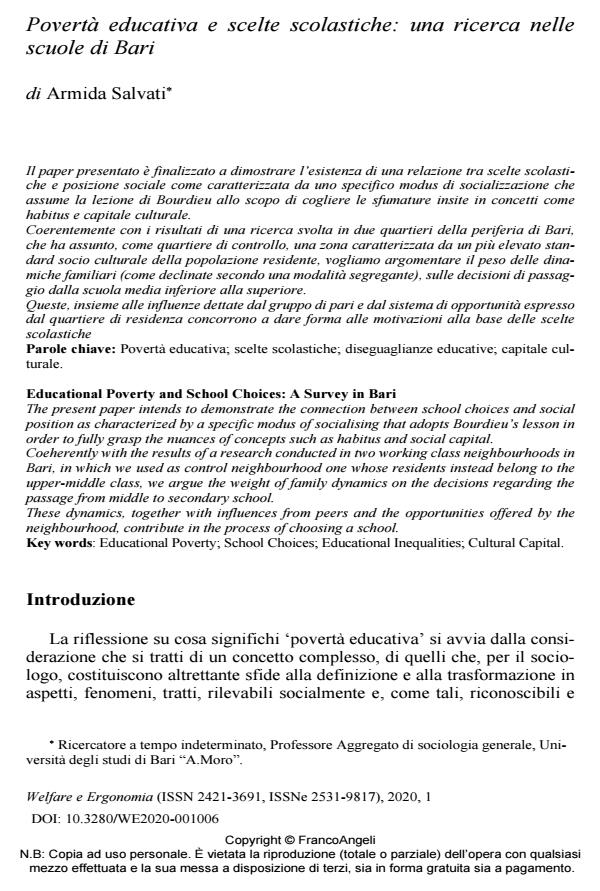Educational Poverty and School Choices: A Survey in Bari
Journal title WELFARE E ERGONOMIA
Author/s Armida Salvati
Publishing Year 2020 Issue 2020/1
Language Italian Pages 12 P. 59-70 File size 313 KB
DOI 10.3280/WE2020-001006
DOI is like a bar code for intellectual property: to have more infomation
click here
Below, you can see the article first page
If you want to buy this article in PDF format, you can do it, following the instructions to buy download credits

FrancoAngeli is member of Publishers International Linking Association, Inc (PILA), a not-for-profit association which run the CrossRef service enabling links to and from online scholarly content.
The present paper intends to demonstrate the connection between school choices and social position as characterized by a specific modus of socialising that adopts Bourdieu’s lesson in order to fully grasp the nuances of concepts such as habitus and social capital. Coeherently with the results of a research conducted in two working class neighbourhoods in Bari, in which we used as control neighbourhood one whose residents instead belong to the upper-middle class, we argue the weight of family dynamics on the decisions regarding the passage from middle to secondary school. These dynamics, together with influences from peers and the opportunities offered by the neighbourhood, contribute in the process of choosing a school.
Keywords: Educational Poverty; School Choices; Educational Inequalities; Cultural Capital.
Armida Salvati, Povertà educativa e scelte scolastiche: una ricerca nelle scuole di Bari in "WELFARE E ERGONOMIA" 1/2020, pp 59-70, DOI: 10.3280/WE2020-001006